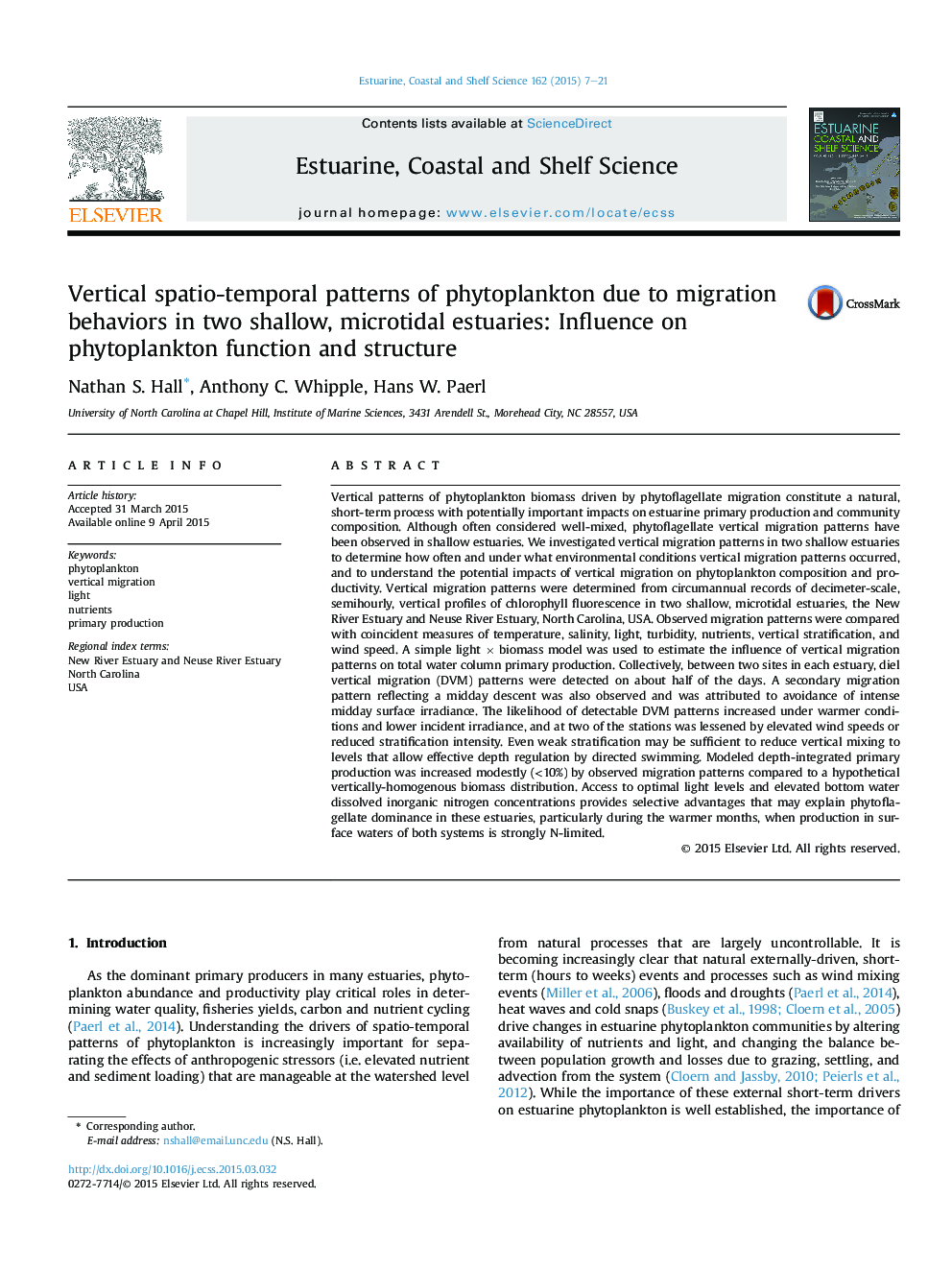| کد مقاله | کد نشریه | سال انتشار | مقاله انگلیسی | نسخه تمام متن |
|---|---|---|---|---|
| 4539443 | 1626634 | 2015 | 15 صفحه PDF | دانلود رایگان |
• We examined circumannual records of semihourly vertical chlorophyll profiles in two shallow estuaries.
• Diel vertical migration patterns were observed on about half of days.
• Seasonally, diel vertical migration was more common when nutrients increased with depth.
• Access to light and nutrients by vertical migration provides advantages to phytoflagellates.
• Migration patterns resulted in small increases in depth integrated primary production.
Vertical patterns of phytoplankton biomass driven by phytoflagellate migration constitute a natural, short-term process with potentially important impacts on estuarine primary production and community composition. Although often considered well-mixed, phytoflagellate vertical migration patterns have been observed in shallow estuaries. We investigated vertical migration patterns in two shallow estuaries to determine how often and under what environmental conditions vertical migration patterns occurred, and to understand the potential impacts of vertical migration on phytoplankton composition and productivity. Vertical migration patterns were determined from circumannual records of decimeter-scale, semihourly, vertical profiles of chlorophyll fluorescence in two shallow, microtidal estuaries, the New River Estuary and Neuse River Estuary, North Carolina, USA. Observed migration patterns were compared with coincident measures of temperature, salinity, light, turbidity, nutrients, vertical stratification, and wind speed. A simple light × biomass model was used to estimate the influence of vertical migration patterns on total water column primary production. Collectively, between two sites in each estuary, diel vertical migration (DVM) patterns were detected on about half of the days. A secondary migration pattern reflecting a midday descent was also observed and was attributed to avoidance of intense midday surface irradiance. The likelihood of detectable DVM patterns increased under warmer conditions and lower incident irradiance, and at two of the stations was lessened by elevated wind speeds or reduced stratification intensity. Even weak stratification may be sufficient to reduce vertical mixing to levels that allow effective depth regulation by directed swimming. Modeled depth-integrated primary production was increased modestly (<10%) by observed migration patterns compared to a hypothetical vertically-homogenous biomass distribution. Access to optimal light levels and elevated bottom water dissolved inorganic nitrogen concentrations provides selective advantages that may explain phytoflagellate dominance in these estuaries, particularly during the warmer months, when production in surface waters of both systems is strongly N-limited.
Journal: Estuarine, Coastal and Shelf Science - Volume 162, 5 September 2015, Pages 7–21
